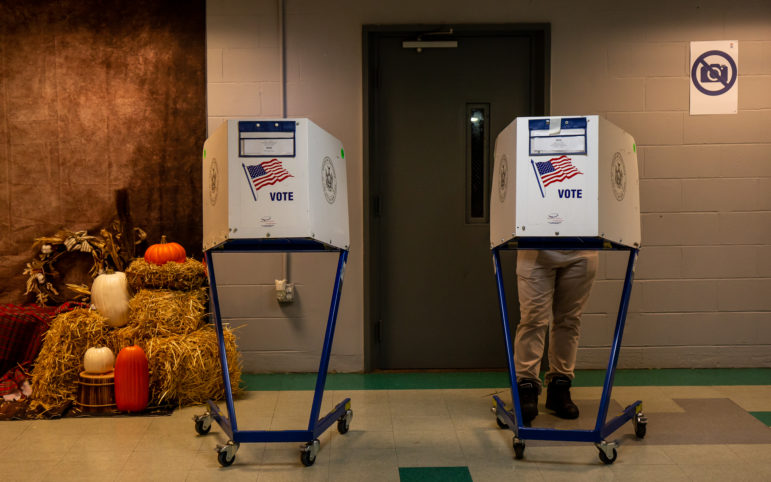“While record youth turnout across the country enabled Democrats to hold the U.S. Senate and make gains in swing districts barely won by President Joe Biden, the New York vote looked more like the pre-Trump era of apathy and disengagement.”

Adi Talwar
The poll site at Glad Tidings Assembly of God on Van Cortlandt Avenue in the Bronx on Nov.8, 2022.The red wave that was supposed to rush across America in November had started in the Atlantic Ocean before splitting into two distinct storms somewhere off the eastern seaboard. One section headed south to Florida, continuing to build on the new-ish diverse coalition of Republican strongholds across the state. The other sat outside the Long Island sound, debating its course before eventually crashing across the sound, flooding southern Brooklyn and reaching up the Hudson valley.
Over the past few weeks, a lot has been written about what created this red wave across New York, one that seems to be the reason for Democrats losing control of the House of Representatives in D.C.
While Gov. Kathy Hochul pulled off a closer-than-imagined victory and some gains were won amongst new Democratic figures, a theme of low youth voter engagement and communities of color voting for Republicans separated New York from the rest of the country on Election Day.
While record youth turnout across the country enabled Democrats to hold the U.S. Senate and make gains in swing districts barely won by President Joe Biden, the New York vote looked more like the pre-Trump era of apathy and disengagement.
As Gov. Hochul and Democratic leaders in Albany circle together to survey the damage, they’ll have two options. Stay the course and hope that a future Trump candidacy re-engages young and minority communities as it did six years ago, or alter tracks by making legislative maneuvers that show young people that their leaders in Albany can make a material impact on their lives.
These legislative shows of faith cannot just be minor patchwork fixes that signal virtue without making families whole, but must be tangible and financial changes that get at the root of New Yorkers’ daily challenges.
They can start by passing legislation like Good Cause Eviction to prevent families from egregious unprecedented rent hikes. They can pass anti-hunger legislation like The Hunger Free Campus Act, which provides funding to public colleges across the state to grow food pantries and basic needs centers. They can make crucial investments in New York City’s transportation infrastructure to make #6MinuteService a reality. They can fund New York higher education institutions at a level that begins to repair decades of disinvestment and once again make CUNY and SUNY the envy of the nation.
In two years, young New Yorkers will once again wake up on another Election Day and take a moment to look at their lives, their communities, their cities, and their state. They will ask themselves and those around them how their lives changed over the last two years. Will they have been able to stay afloat and work towards achieving their dreams during these turbulent economic times or will they continue to suffer through hunger, disinvestment, and a crumbling support system?
Gov. Hochul and Democratic leaders in Albany now have a chance to answer that question; if they choose wrong and choose inaction, I’d recommend they prepare to hunker down as the red wave that came ashore in 2022 turns into a red hurricane.
Robb Friedlander is the director of advocacy at Swipe Out Hunger, the leading nonprofit addressing hunger among college students. Swipe Out Hunger promotes on-campus solutions, policy and advocacy pathways, and community-building practices to address student hunger on more than 450 colleges in all 50 states and Canada.








